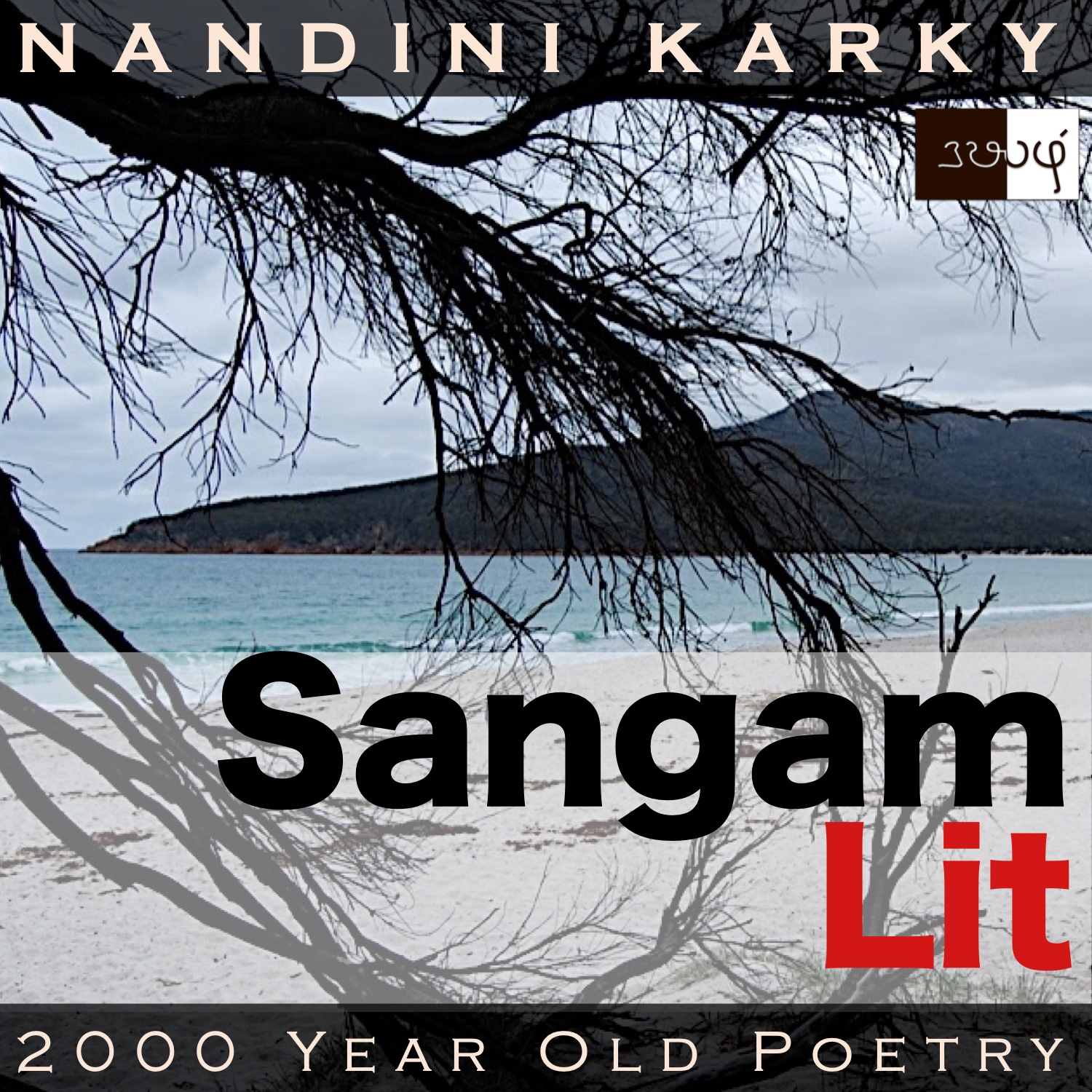Podcast: Play in new window | Download
Subscribe: Apple Podcasts | Spotify | Amazon Music | Android | iHeartRadio | Email | TuneIn | RSS | More

In this episode, we perceive the changing stance of a heart, as depicted in Sangam Literary work, Kurunthogai 340, penned by Ammoovanaar. Set in the coastal regions of ‘Neythal’, the verse speaks in the voice of the lady to the confidante, when the confidante conveys the man’s request to tryst with the lady by night.
காமம் கடையின் காதலர்ப் படர்ந்து,
நாம் அவர்ப் புலம்பின், நம்மோடு ஆகி,
ஒரு பாற் படுதல் செல்லாது, ஆயிடை,
அழுவம் நின்ற அலர் வேய்க் கண்டல்
கழி பெயர் மருங்கின் ஒல்கி, ஓதம்
பெயர்தரப் பெயர்தந்தாங்கு,
வருந்தும்-தோழி!-அவர் இருந்த என் நெஞ்சே.
At the core of this verse is ‘a heart that moves both ways’! In the opening words ‘காமம் கடையின் காதலர்ப் படர்ந்து’ meaning ‘when love overflows, it turns to the beloved’, the verse portrays the acute state of a heart in love. The phrase ‘ஒரு பாற் படுதல் செல்லாது’ meaning ‘not sticking to one place’ talks of a restless movement between two points. Away from abstractions, we sight the real in ‘அழுவம் நின்ற அலர் வேய்க் கண்டல்’ meaning ‘mangrove tree, filled with flowers, standing on the shore’. A strong force that exerts its influence on an object can be sensed in ‘பெயர்தரப் பெயர்தந்தாங்கு’ meaning ‘as it is moved, it moves along’. Ending with the words ‘அவர் இருந்த என் நெஞ்சே’ meaning ‘the heart in which he resides’, the verse brims over with the feeling of love and tenderness.
Seems like a precise portrait of the state of a heart! The context reveals that the man and lady were leading a love relationship and the man was trysting with the lady by day for a while. Later, he expresses his intention to tryst with the lady by night to the confidante and the confidante takes this message to the lady. To her friend, the lady says, “When love brims over, it moves towards my lover, and when I am alone, parted away from him, it comes towards me. Thus, unable to stay in one stance, akin to a flower-filled pandanus tree standing on the shore, leaning into the backwaters, when the flood moves, it moves along with it, in worry, my friend – this heart of mine where he lives” With these words, the lady refuses the man’s request to tryst with her by night by talking about her fear of the dangers in the man’s nightly travel.
Time to explore the nuances in this intricate verse. The lady starts by detailing two states of her heart. Whenever the feeling of wanting to be with the man rises, her heart seemed to take wings and fly towards him, and whenever it found the lady worrying all alone, thinking about what has become of the man, the heart would rush back to her. And thus, she tells her friend, her heart is unable to stay in one place and is pushed hither and thither, in anxiety, much like how the mangrove tree on the shore, decked with flowers, is pushed this way and that way, as the floods rise and dip in the backwaters. Concluding that is the precise state of her heart, the one in which the man has taken residence, the lady conveys her refusal to meet with the man at night.
Just because she says ‘no’, it doesn’t mean that she loves him no more, and this the lady makes clear in her stress on how her heart is still pulled towards the man, and indeed, it is one in which he resides. What she deeply wants is not this temporary state of trysting, parting and worrying in the man’s absence, but one in which is permanently united with him. That picturesque image of a flower filled branch of a seashore tree is striking as a reminder of protective mangroves, guarding the land of the coast! The other subtle element is in the dynamic movement of a heart when in confusion and more importantly, the perception of that. To be able to pause and see what’s happening to the heart in the middle of distress is the first, clear step in rising above it and it’s this mental management technique that this verse seems to teach us with ease!




Share your thoughts...